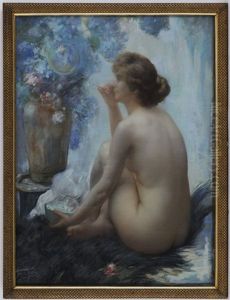Louis Piot Paintings
Louis Piot was a French medallist and coin engraver born in 1822. He gained recognition for his work in the field of medal-making, which was an important art form in the 19th century, particularly in France where there was a strong tradition of medallic art. Piot trained at the École des Beaux-Arts in Paris, which was the premier art school in France and a training ground for many prominent artists of the period.
Piot's career spanned much of the 19th century, a time when the art of medal-making was held in high esteem and patronized by the government, institutions, and the elite. Medals were not only created to commemorate significant events but also to honor notable individuals. They were seen as both works of art and historical documents. Piot exhibited his work at the Salon, the official art exhibition of the Académie des Beaux-Arts in Paris, and received acclaim for his designs and craftsmanship.
In addition to creating medals, Piot was also involved in coin engraving, an art that requires meticulous skill and precision. His work would have involved the careful design and execution of the imagery and inscriptions that appear on coins, which were then used to produce the dies for striking the actual currency. This work would have been particularly significant during the 19th century as France underwent various political changes, each of which would have been reflected in the country's coinage.
Piot's artistic contributions were part of a broader movement of medallic art in France that included other notable medallists such as Pierre-Jean David d'Angers and Eugène André Oudiné. These artists helped to elevate the status of the medal as an art form and to cement France's reputation as a leader in this field. Louis Piot passed away in 1909, leaving behind a legacy as a skilled engraver and medallist whose works may still be appreciated by numismatists and art historians today.




